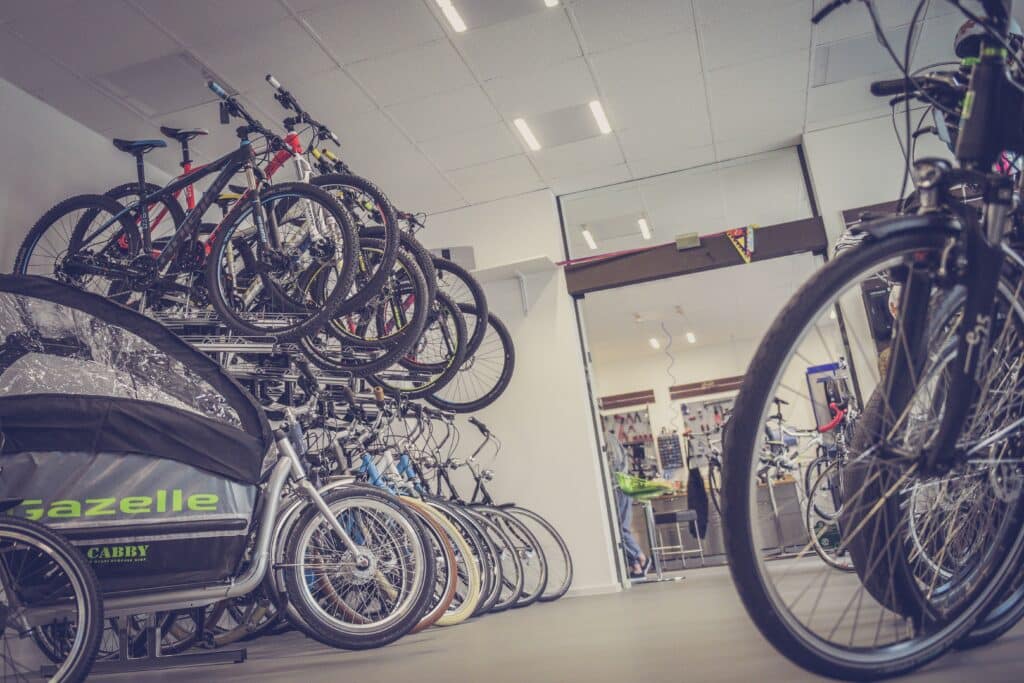
In today’s retail landscape, efficiency, accuracy, and customer experience are paramount. In this regard, RFID (Radio-Frequency Identification) has emerged as a critical new retail technology.
RFID tech has revolutionized data collection processes within the retail environment, offering unparalleled advantages that span inventory management, supply chain optimization, and customer satisfaction. Many companies have seen their inventory accuracy go from around 60% to over 90%.
This article will explore how businesses can leverage RFID for data collection in the retail sector.
How Does RFID Collect Data: Technical Aspects
RFID technology collects data through a simple and efficient, yet effective, process. It consists of RFID tags, which are attached to objects, and RFID readers equipped with antennas.
When an RFID reader emits radio frequency signals, nearby RFID tags receive the signals. Passive RFID tags draw power from the reader’s signal and respond by transmitting data stored on the tag’s microchip. Active RFID tags have their own power source and can transmit data more actively.
The reader captures this data, typically including a unique identifier or code associated with the tagged object. This information is relayed to a central system or database, allowing for real-time tracking, inventory management, and other data collection applications. The efficiency of RFID lies in its non-contact and rapid data exchange, making it invaluable in various industries for accurate and automated data collection.
RFID Data Collection Applications in Retail
RFID data collection offers retailers an array of benefits. Here are 8 of the most important ones:
1. Inventory Management and Accuracy
Maintaining precise inventory records is a foundational requirement for success in the retail world. RFID empowers retailers to achieve near real-time visibility into their stock levels.
Traditional barcodes or manual stock counting methods are time-consuming and error-prone. In contrast, RFID tags, attached to individual items or pallets, allow for efficient data collection.
RFID readers strategically placed throughout the store can quickly scan items as they move, ensuring that inventory counts are always current. This accuracy has a profound impact on operational efficiency and customer satisfaction.

2. Stock Replenishment
One of the significant challenges in retail is ensuring that products are consistently available to meet customer demand. RFID technology streamlines the stock replenishment process. RFID readers trigger automated restocking alerts when an item’s stock falls below a predefined threshold.
“RFID data transformed our inventory management. I think it improved our accuracy by at least 20%. Being able to really look at those real-time insights helps keep our shelves stocked and our customers smiling.”
Robert S. – BikeHaven
This data collection minimizes the risk of stockouts and overstock situations, optimizing inventory levels and reducing carrying costs.
3. Loss Prevention
Retailers grapple with the issue of shrinkage, which includes theft, errors, and damages. RFID data collection plays a pivotal role in mitigating these losses.
Businesses can conceal RFID tags within products, and fixed readers at store exits can instantly detect any unauthorized removal of tagged items. This setup deters theft and allows for rapid identification and recovery of stolen goods. RFID can also help identify items nearing expiration, reducing spoilage-related losses.
4. Supply Chain Visibility
The retail journey begins long before a product reaches the store shelf. RFID is instrumental in providing end-to-end visibility across the supply chain. Manufacturers, distribution centers, and retailers can track the movement of goods in real-time. In one survey, 97% of supply chain professionals had adopted or planned to adopt RFID.
This data collection ensures that products are delivered on time and in the right quantities, reducing the chances of delayed shipments or costly rush orders.
5. Enhanced Customer Experience
In the age of eCommerce and omnichannel retailing, customers expect a seamless shopping experience. RFID data collection enhances the customer journey by ensuring the desired products are in stock and readily available. With improved stock availability and visibility comes smoother shopping experiences for customers.
Moreover, RFID can enable features like self-checkout kiosks, reducing wait times and enhancing convenience.

6. Personalized Marketing
RFID technology can also be leveraged for data collection of customer behavior. Retailers can record customers’ preferences and interests when interacting with RFID-enabled displays or products.
Businesses can then use this data to create personalized marketing campaigns, recommend products, and tailor the shopping experience to individual preferences. This level of customization will significantly boost sales and customer loyalty.
7. Returns Management
Handling returns is often a logistical nightmare for retailers. RFID technology streamlines this process. When a customer returns a product, RFID readers quickly and accurately identify the item, verify its condition, and update inventory records accordingly.
Data collection automation reduces the time and effort required to process returns and helps ensure that returned items are promptly restocked or sent for repairs.
8. Compliance and Traceability
Specific retail sectors, such as food, cannabis, and pharmaceuticals, require strict adherence to regulatory standards and traceability. RFID enables precise tracking of products from the manufacturer to the consumer.
A data collection-driven approach ensures compliance with safety and quality control standards. Traceability is invaluable for recalls, quality assurance, and legal regulations.
The more I learn to use KORONA POS, and with the help of awesome customer support, the more I believe this POS system could be a very good fit for many types of businesses out there. What I love the most about this software is the 24/7 customer service and reporting function which are very easy to use.
-Kevin L.
Conclusion
RFID technology has ushered in a new era of data collection. Its impact extends beyond inventory management; it touches every retail aspect, from supply chain optimization to enhancing customer experiences.
In order to future-proof their stores and shops, retailers must invest in RFID-capable retail point of sale software. KORONA POS inventory management system integrates with leading RFID platforms to take your retail store to next-level efficiency. RFID self-checkout kiosks offer lightning-fast data collection to keep lines moving and customers smiling.
Click the link below to learn more about KORONA POS’s RFID tools!
FAQs: RFID Data Collection
RFID (Radio-Frequency Identification) technology collects data primarily through unique identifiers or codes associated with RFID tags. These identifiers can represent individual items, assets, or products. RFID systems may also capture data related to the tag’s location and the time of the interaction, allowing for real-time tracking and management of tagged objects or assets.
Data is retrieved from RFID (Radio-Frequency Identification) using readers equipped with antennas. When an RFID reader sends out radio frequency signals, nearby RFID tags respond by transmitting the data stored on their microchips. The reader captures this transmitted data and relays it to a central database or system for further processing and analysis. From there business operators can view information on the database.
RFID tags themselves do not typically hold extensive data like traditional storage devices such as USB drives or hard disks. Instead, RFID tags store a unique identifier or code associated with the tagged item or asset. This identifier serves as a reference point to retrieve additional data stored in a central database or system.
RFID data is typically stored in a central database or information system. When an RFID reader collects data from RFID tags, such as unique identifiers or codes, it sends this information to a central repository. There the data is processed, managed, and associated with relevant records or objects.













